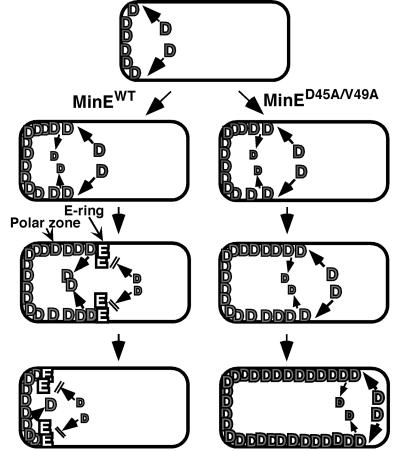Fig. 7. Suggested role of the E-ring in regulating growth of the MinD polar zone. The MinD polar zone grows by addition of new MinD molecules at the medial edge of the zone at a rate that exceeds the rate of spontaneous release of MinD molecules from the polar zone. When the polar zone approaches midcell, the E-ring assembles at its leading edge, and the E-ring then blocks subsequent entry of MinD molecules. In the absence of addition of MinD molecules, the polar zone shrinks, due to spontaneous desorption of MinD. The rate of MinD desorption may also be increased by the presence of the E-ring, as suggested by the decreased rate of shrinkage of the MinD zones in minED45A/V49A cells that lacked MinE rings (see Results). In the absence of the MinE ring, MinD molecules continue to be added to the growing edge of the polar zone, permitting the zone to grow past the midcell division site. MinE is not shown within the polar zone but, in wild-type cells, MinE within the polar zone presumably behaves like MinD. See text for further discussion.

An official website of the United States government
Here's how you know
Official websites use .gov
A
.gov website belongs to an official
government organization in the United States.
Secure .gov websites use HTTPS
A lock (
) or https:// means you've safely
connected to the .gov website. Share sensitive
information only on official, secure websites.
